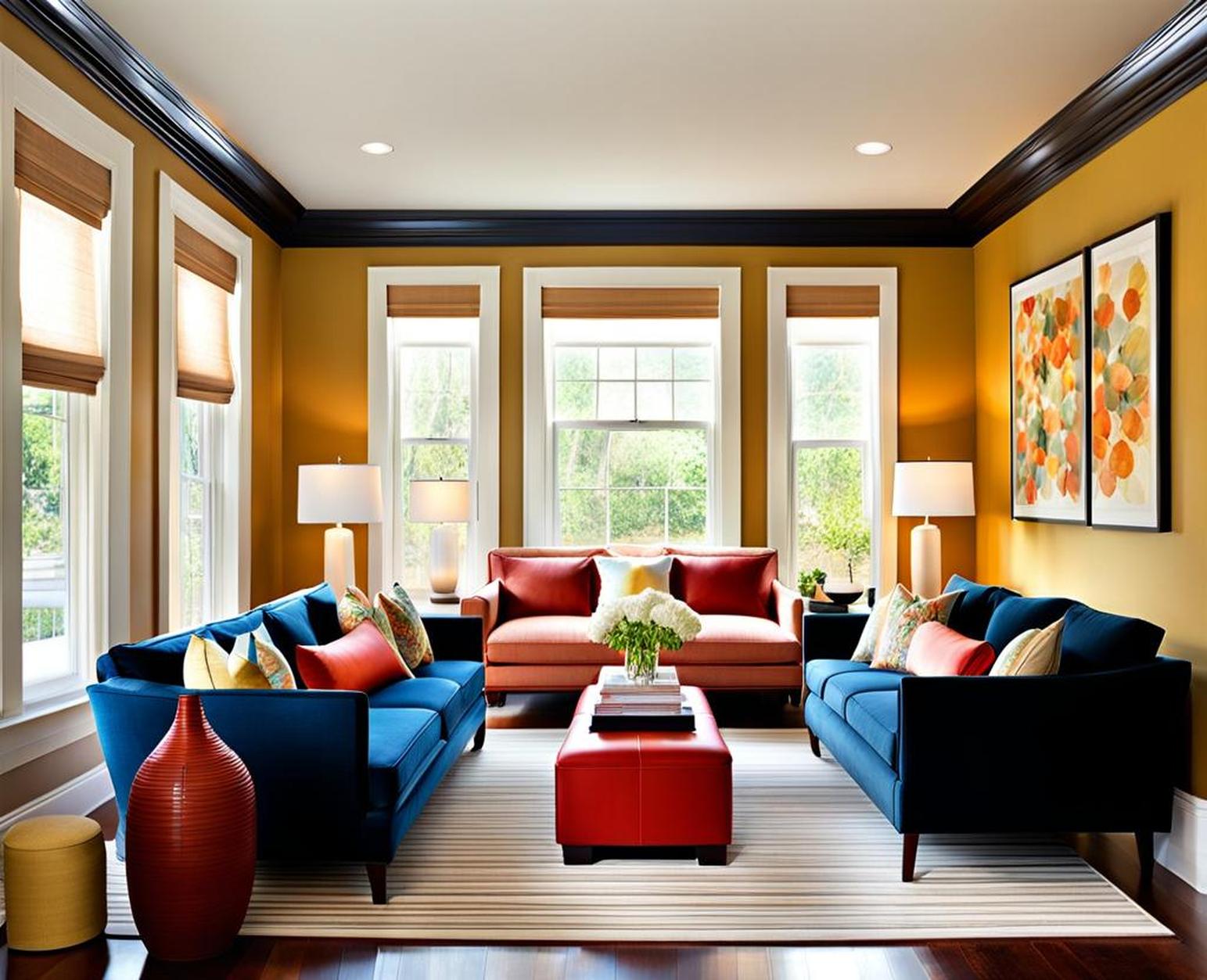Arranging two couches in a small living room can seem like an impossible puzzle. With limited square footage, it’s tricky to figure out the optimal layout to maximize both seating and open floor space. But with some simple tricks and compromise, you can design a comfortable and inviting living room even with a squeezed footprint.
The key is finding the right balance between practicality and aesthetics. Thoughtful couch placement can make a small living room feel more spacious and airy. It can also help define spaces for conversation areas and TV viewing. With measurements, planning, and a dose of creativity, your small living room can be just as stylish and functional as larger rooms.

Take Measurements and Plan Ahead
Before shifting any furniture, take time to measure both your living room and couches. Understand the exact dimensions you’re working with. This will give you a realistic sense of the layout options for two couches. Use a tape measure to note:
- The length and width of the living room
- The amount of space taken up by windows, doors, and permanent fixtures
- The depth, height, and length of each couch
Record your measurements on a sheet of paper or home design app. Then sketch out a simple floorplan with the room’s shape and your furniture pieces to scale. This bird’s eye view can reveal angles and arrangements you may not have considered. Mark potential couch placements and walkways to visualize different living room layouts.
Arrange Couches on Adjacent Walls
One of the most effective small living room layouts is placing the two couches along adjacent walls. Position each couch facing inward toward the center of the room. This arrangement lets you take advantage of the walkways and circulation space behind the couches.
By keeping the couches on separate walls, you can establish two distinct yet connected sitting areas. This provides a sense of order in a potentially cramped room. It also prevents the couches from overwhelming the entire floorspace when placed directly across from each other.
Tips for Adjacent Wall Placement:
- Angle the couches slightly inward rather than having them sit parallel. This opens up sightlines for conversation.
- Leave enough space between the couches and walls for traffic flow. At least 36-40 inches allows people to comfortably move around.
- Push the couches as close to the walls as possible if space is extremely limited. This maximizes the open floor area.
Position Couches Back-to-Back
If you prefer a more intimate seating arrangement, consider placing the two couches back-to-back. Having the backs touch creates a central conversation area within a compact footprint. It also leaves plenty of space open on the outer sides of the couches.
Back-to-back couch placement works best when the couches are the same length. Arrange them so the corners align flush for stability. Angle the couches slightly outward to define entryways into the center seating space.
Maximizing Back-to-Back Placement:
- Angle the couches outward to create clear entryways rather than having flush backs.
- Use the area between the couches to place a coffee table for drinks and storage.
- Float the couches slightly away from the walls if space allows. This expands potential walkways.
Optimize Couch Placement for TV Viewing
If a major living room function is gathering around the TV, optimize your layout to enhance the viewing experience. Position both couches at angles facing the wall where your TV screen is mounted. Place the couches far enough from the wall to allow room for reclining back comfortably.
Make sure to leave a space between the couches for end tables or lamps. approximated 36 inches allows you to reach drinks and remotes while accommodating a side table. Measure the ideal distance based on your couch size and room dimensions.
Use the Walls and Corners
When floor space is extremely limited, use the existing walls and corners to your advantage. Push one couch into a corner to save several feet of space. Leave enough room for end table accessibility.
You can also float one couch out from a wall and position the other flush against the adjacent wall. The corner placement helps the room feel a bit more full despite having less open floor area. Just be sure to avoid blocking windows or doorway access.
Final Tips for Arranging Couches
As you experiment with different couch placements, keep a few general principles in mind:
- Balance sightlines so one couch doesn’t block views from the other couch. Leave a few feet between them.
- Allow enough breathing room between couches, walls, and other furniture. At least 18-24 inches provides space to navigate.
- Mix and match approaches like floating one couch while squeezing another into a corner.
Small living room couch arrangements require compromise. But you have more options than you think. Mix, match, and move pieces until you find a layout that maximizes seating, flow, and style.
Arranging two couches in a small living room may seem daunting. But with careful planning and strategic couch placements, you can create a comfortable and aesthetically pleasing space.
Focus on taking measurements, finding the right adjacent wall or back-to-back orientation, and incorporating your room’s existing features. Angle couches thoughtfully, allow for traffic flow, and be willing to experiment. Despite a squeezed footprint, you can craft a small living room layout perfect for conversation, TV viewing, and beyond.
Any small living room can be stylish and organized with a few simple changes. Use these tips to make the most of your space with a creatively optimized two couch layout.
